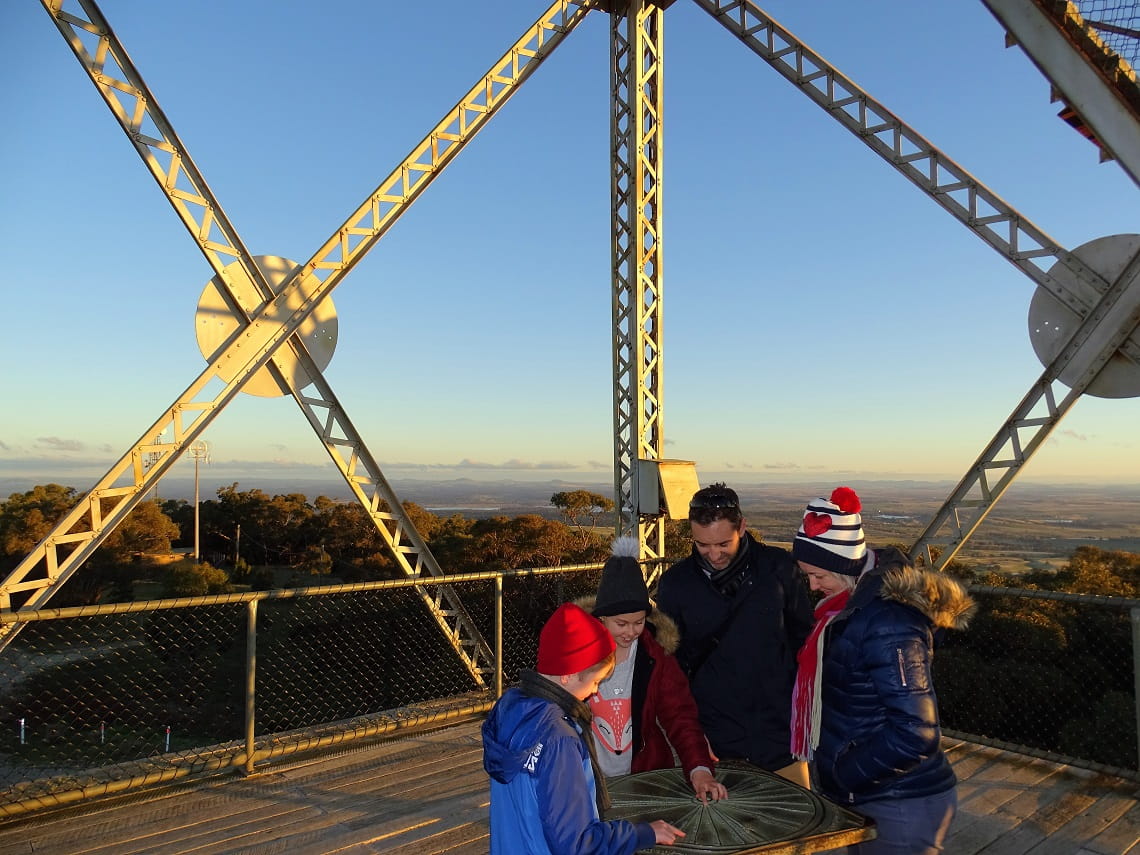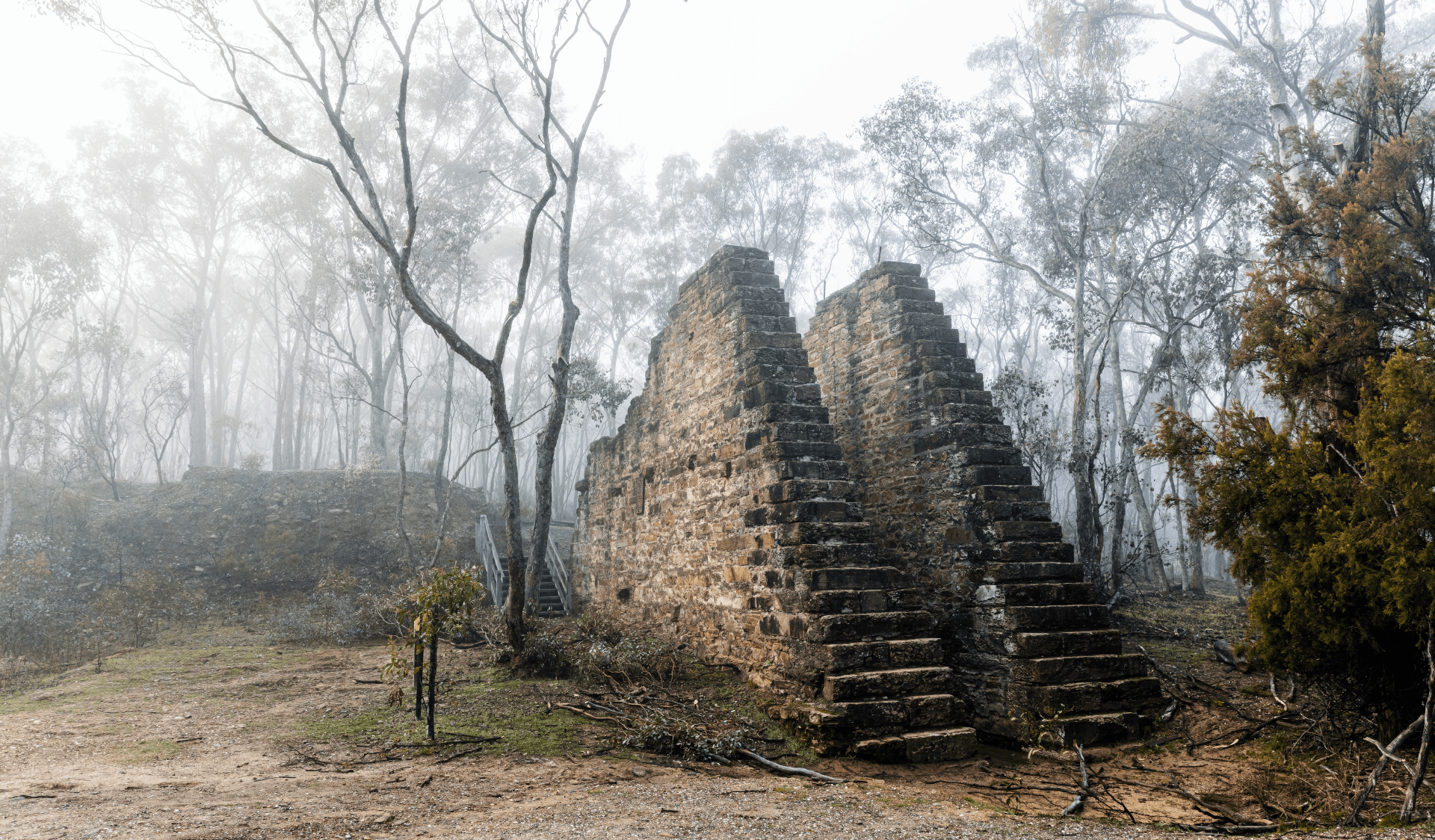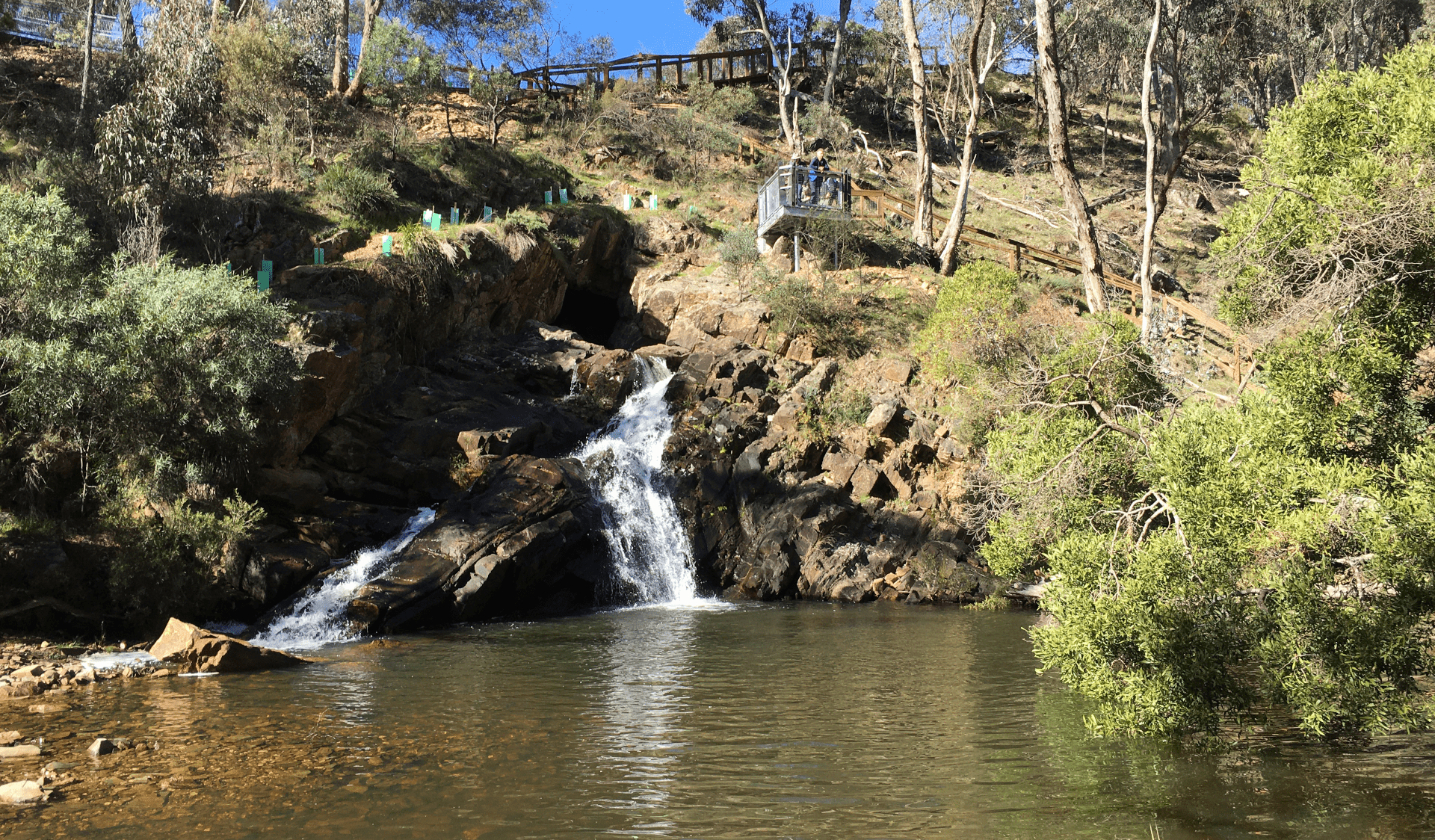Victoria's central goldfields around Castlemaine, Maldon, and Hepburn, on Dja Dja Wurrung Country, have some of the most intact remains of the 1850s gold rush anywhere in the world.
If you enjoy ornate historic architecture, learning about life on the goldfields, and discovering the techniques used by miners during the gold rush then a trip to these parks in the area is a must.
Take a short walk to a secluded old miner's cottage, see the remains of old mines and miner's houses, take a half-day car tour around the highlights, or enjoy the sweeping views over one of Australia's most well-preserved historic villages.
Here are our top picks for the things you shouldn't miss.
Mount Tarrangower Lookout and North British Mine
Wrapped around the well-preserved village of Maldon is the Maldon Historic Area. From a tall brick chimney to scattered remains of buildings you'll take a look back at the architecture and bustling hive of activity that was Maldon in the late 1800s.
North British Mine on the edge of town tells the tale of how gold was extracted from the land, with old roasting kilns, vats, remains of buildings and a mine shaft all clear to see.
For a view across the existing village and the eroded gullies and remains of buildings and mines scattered around the town, drive to the top of Mount Tarrangower, and climb the charming poppet head tower.

Sweeping views from the top of Mount Tarrangower lookout
Eureka Reef, Garfield Water Wheel and Herons Reef
These are just three of the many sites to see in Castlemaine Diggings National Heritage Park.
A short walk into Herons Reef in Cobblers Gully will lead you to an old miner's cottage in a stoned-fenced yard, as well as a Chinese camp, the ruins of an engine house, battery and blacksmith's shop.
Alluvial gold diggers and quartz reef miners at Eureka Reef on a self-guided 1.8km walk. Some of the earliest quartz mining relics in Victoria can be seen here. See a massive exposed quartz reef, foundations of Cornish crushing batteries and a mining village.
Moving and using water was a key part of mining in the 1800s. See the remaining towering stone foundations of one of the world's largest water wheels - Garfield Water Wheel. Found on the Goldfields Track, there are several family-friendly walking tracks and a picnic area here to enjoy.

The remaining towering stone foundations of one of the world's largest water wheels - Garfield Water Wheel
The Blowhole in Hepburn
Stand on the viewing platform at The Blowhole in Hepburn Regional Park and witness the landscape-altering changes 1850s gold miners were willing to undertake in their quest for gold. Miners diverted the flow of Sailors Creek through the hillside in order to work a bend in the creek line. Take your pick of a long or short loop walk through the remnants of gold rush workings.

The Blowhole in Hepburn Regional Park
Dja Dja Wurrung Country
The large deposits of gold discovered in Dja Dja Wurrung Country in the mid-1800s enticed flocks of people to make their fortune. The success of these goldfields can partially be attributed to Djaara for maintaining Country with Traditional Land Management Practices such as Wi (fire), which created an open landscape for pastoralists, surveyors and gold miners to explore and claim as their own.
The miners cut down trees for firewood and buildings, diverted creeks and rivers and dug holes in the ground, pulling up large volumes of earth.
Since that time, mining has been constant in Dja Dja Wurrung Country. Djaara people are working to heal Country, and to reverse what they know as "upside-down country" – Country turned on its head by the gold diggings. Park visitors can help in these efforts by looking to Aboriginal people as the leaders on regenerating natural and cultural landscapes - and by learning the Aboriginal history of the areas they visit.
You can learn more about Dja Dja Wurrung Country at the Djaara website, and find out about the Traditional Owners where you live via the Aboriginal Cultural Heritage Register and Information System map. To learn about how to recognise and respect Aboriginal cultural heritage, see Parks Victoria's Protecting Aboriginal Cultural Heritage page, which includes an identification guide.






